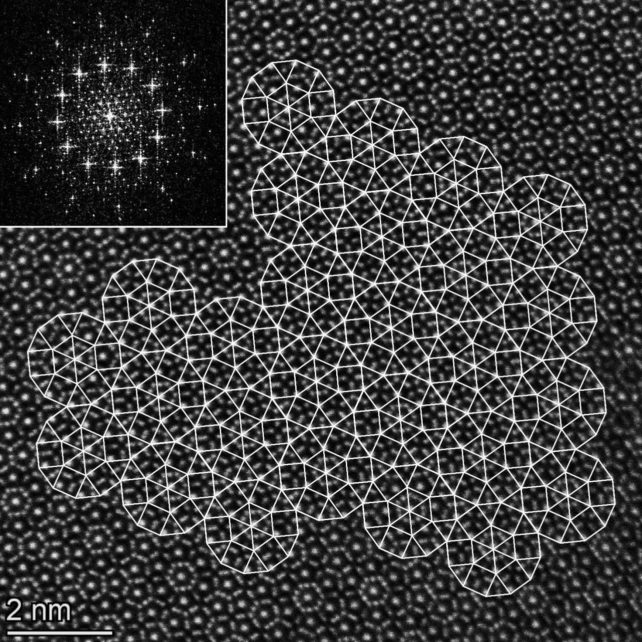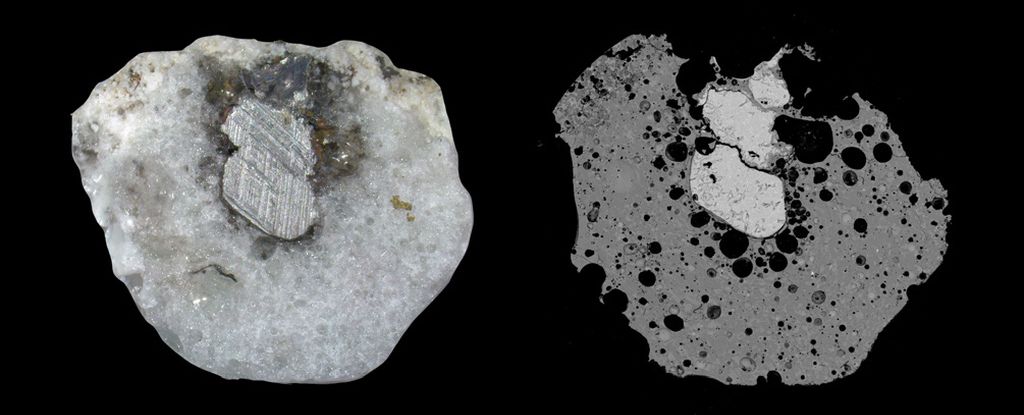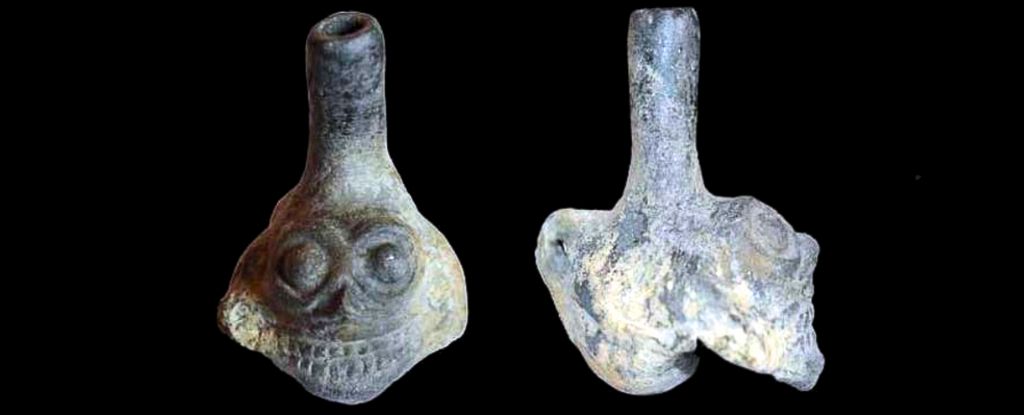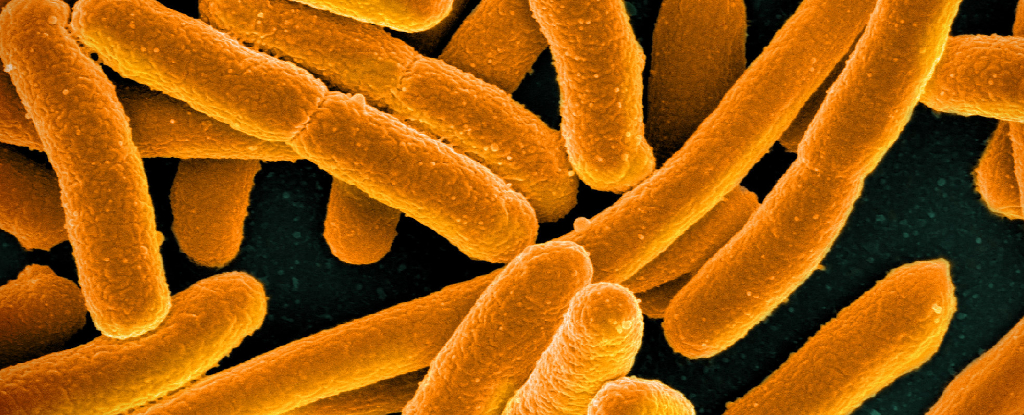The fierce electrical fingers that struck a sand dune in Nebraska left behind a crystal configuration rarely found in nature.
Inside a piece of fulgurite – or “petrified”. lightning‘ – created by a powerful bolt of electricity penetrating and fusing sand, scientists have found a quasicrystal, an arrangement of matter once thought impossible.
This discovery suggests that there are previously unknown ways of forming quasicrystals, opening new avenues for their synthesis in the laboratory.
“The current investigation was designed to explore another possible nature-inspired mechanism for quasicrystal formation: electrical discharge,” write a team of researchers led by geologist Luca Bindi of the University of Florence in Italy in their work.
“The discovery of a quasicrystal in a fulgurite with a rarely observed 12-fold symmetry and a previously unreported composition suggests that this approach could also be promising in the laboratory.”
Most crystalline solids in nature, from simple table salt to the hardest diamonds, follow the same pattern: their atoms are arranged in a lattice structure that is repeated in three-dimensional space.
Solids that don’t have these repeating atomic structures— amorphous solids like glass – are generally an atomic jumble, a jumble of atoms thrown together with no rhyme or reason.
Quasicrystals break the rule – their atoms are arranged in a pattern, but this pattern is not repeated.
When the idea of quasicrystals first emerged in the 1980s, the concept was thought impossible. Solids can be either crystalline or amorphous, not that weird in-between. But then scientists actually found them in both the laboratory setting and in nature deep inside meteorites.
Since then, scientists have found that quasicrystals can only form in nature under extreme conditions, at incredibly high shocks, temperatures and pressures.
Hypervelocity meteor impacts are one such environment; In fact, for a long time it was the only environment in which they were found in nature and was therefore considered to be possibly the only place where they could occur.
Then Bindi and his colleague, Princeton University physicist Paul Steinhardt, and their team found a quasicrystal [Forgedinanatomicbombtestin1945[1945beieinemAtombombentestgeschmiedet. While these aren’t exactly “natural” conditions, the discovery suggested there might be other environments in which quasicrystals could form.
Lightning is one of the most powerful forces in naturestrikes at extreme speed and can heat the air it passes through 5 times the temperature the sun’s surface.
And if it hits the ground in the right place with enough force, it can melt sand, leaves a fulgurite – a “fossil” of the path it traveled through the ground.
All the ingredients are there: shock, temperature and pressure. So Bindi, Steinhardt and their colleagues set about examining fulgurites for quasicrystals.
They received a fulgurite sample from the Sandhill Region of Nebraska, retrieved from a location near a fallen power line and exposed scanning electron microscopy and transmission electron microscopyto determine its chemical composition and crystalline structure.

The sample consisted of melted sand and traces of melted conductor metal from the power line. Inside, the researchers found a dodecahedral (twelve-sided) quasicrystal with the previously unknown composition Mn72.3si15.6kr9.7Al1.8no0.6.
The atoms in this quasicrystal formed a pattern with 12-fold symmetry, arranged in a quasicrystalline order impossible in normal crystals.
It is unclear whether lightning or the power line was responsible for the electricity that created the fulgurite; However, based on their analysis, the team determined that the sand had to be heated to at least 1,710 degrees Celsius (3,110 degrees Fahrenheit) to create the fulgurite.
This, the researchers say, provides clues as to how scientists might make quasicrystals in the lab. Quasicrystals found in a meteorite suggested that shock synthesis might be a way; Lightning offers new possibilities.
“The discovery of a dodecagonal quasicrystal formed by a lightning strike or a powered down power line suggests that electrical discharge experiments could be another approach to add to our arsenal of synthetic methods.” they write in their newspaper.
And the discovery points to previously overlooked pathways of quasicrystal formation – both on Earth and beyond.
“The results presented here, together with the trace element abundances measured in natural quasicrystals, raise the possibility that electrical discharges in the early solar nebula may have played a key role, not only responsible for the required reduction conditions but also promoting the formation of quasicrystals.”
The research was published in PNAS.





